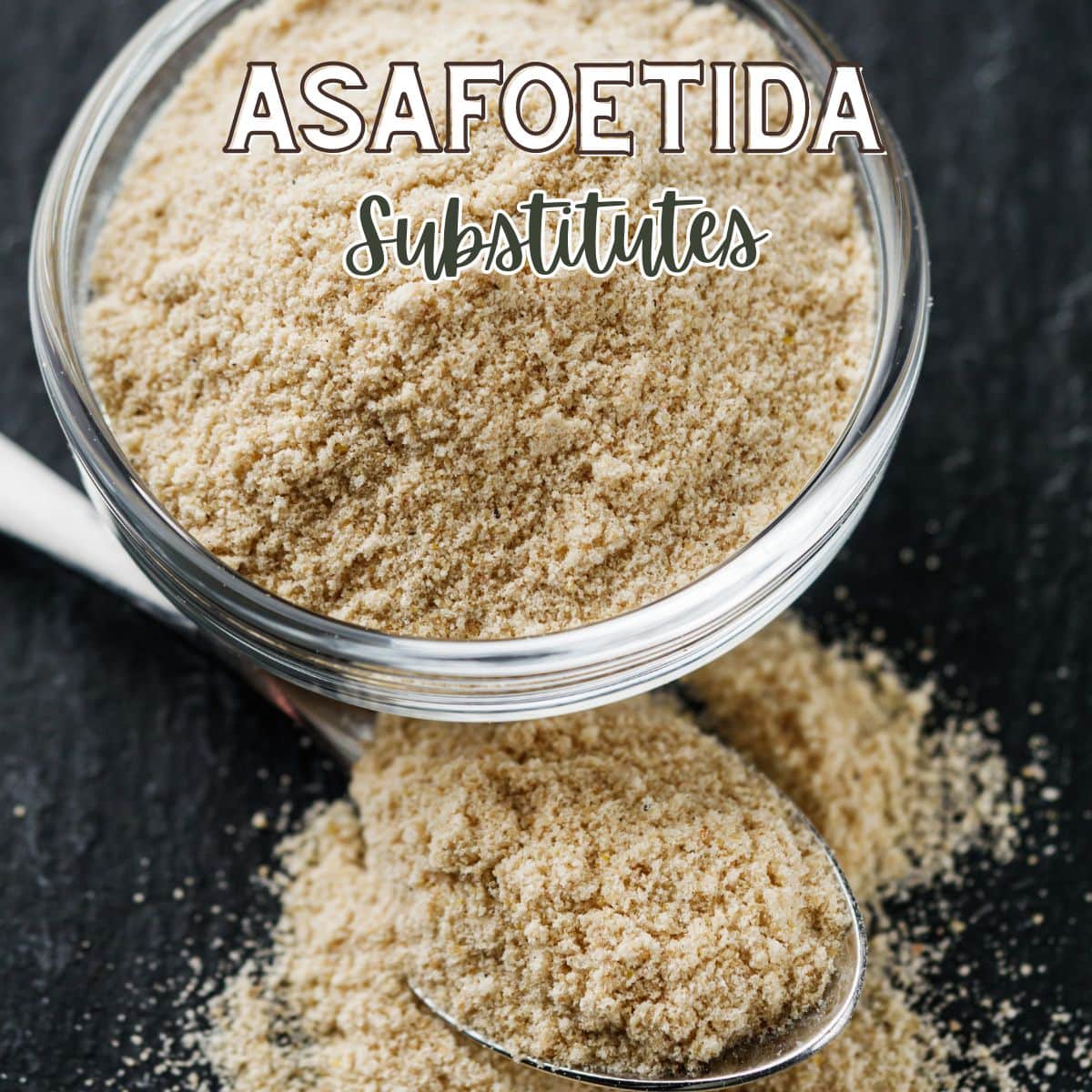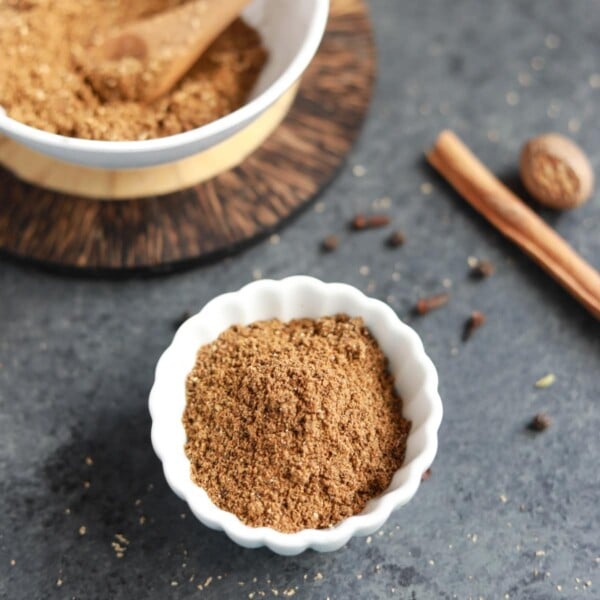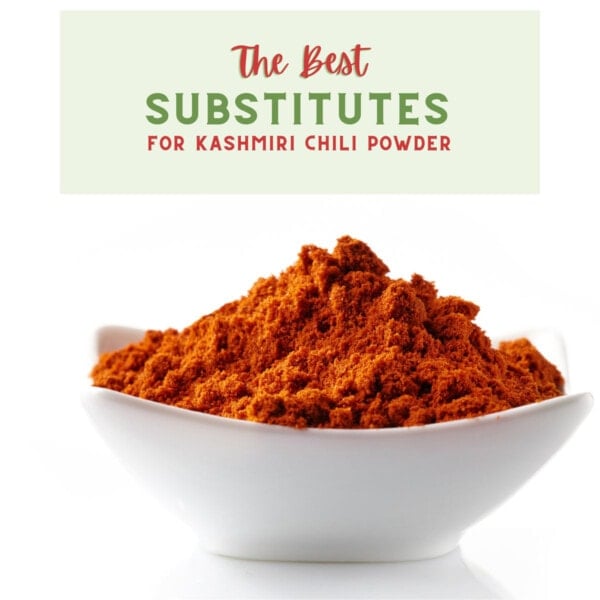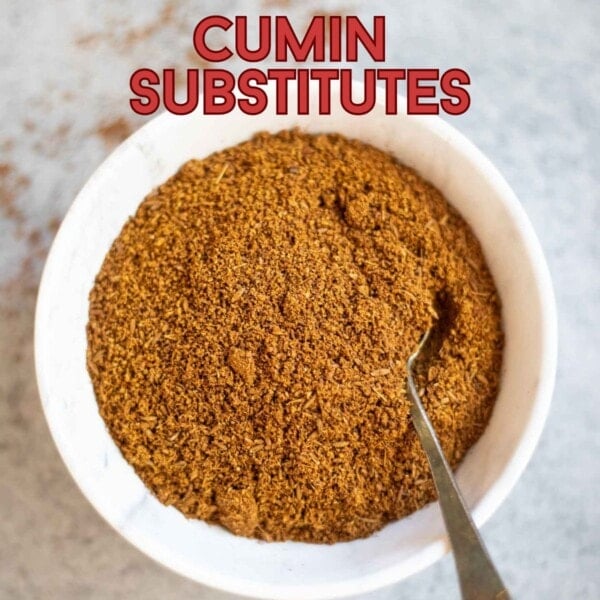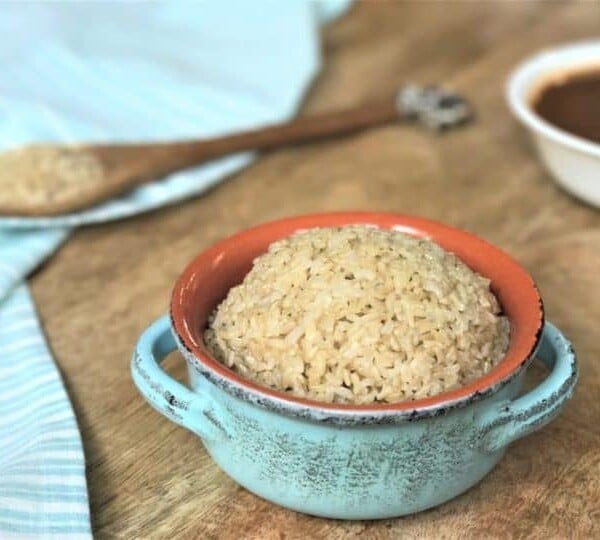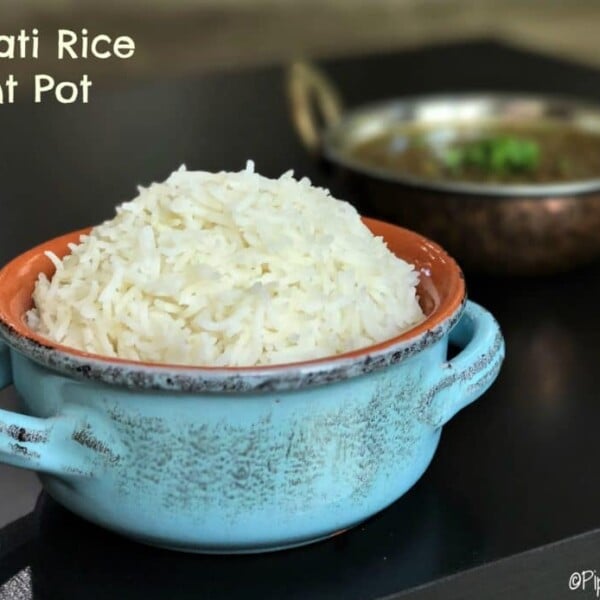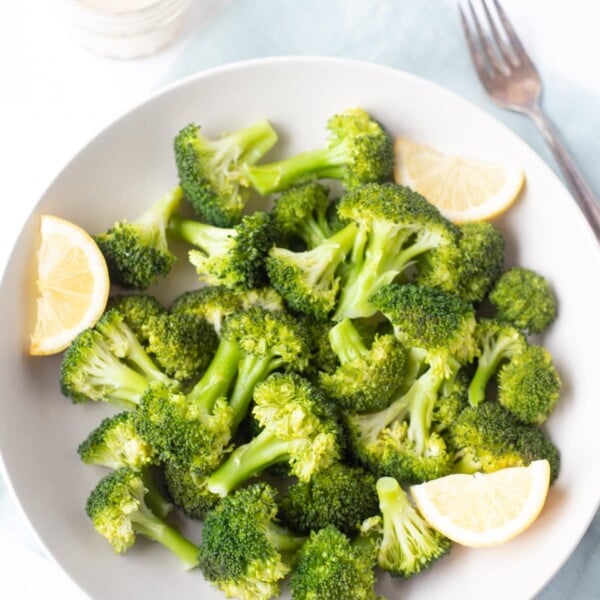Asafoetida, also popular as “hing”, is a strong spice commonly valued in both Indian cooking and traditional medicine. Although you can find Asafoetida in some stores, it is not as easily available. While substitutes like garlic, onion, fenugreek, and cumin can be used, they may not capture Asafoetida’s unique essence. Learn the various substitutes for asafoetida that can be used in cooking.
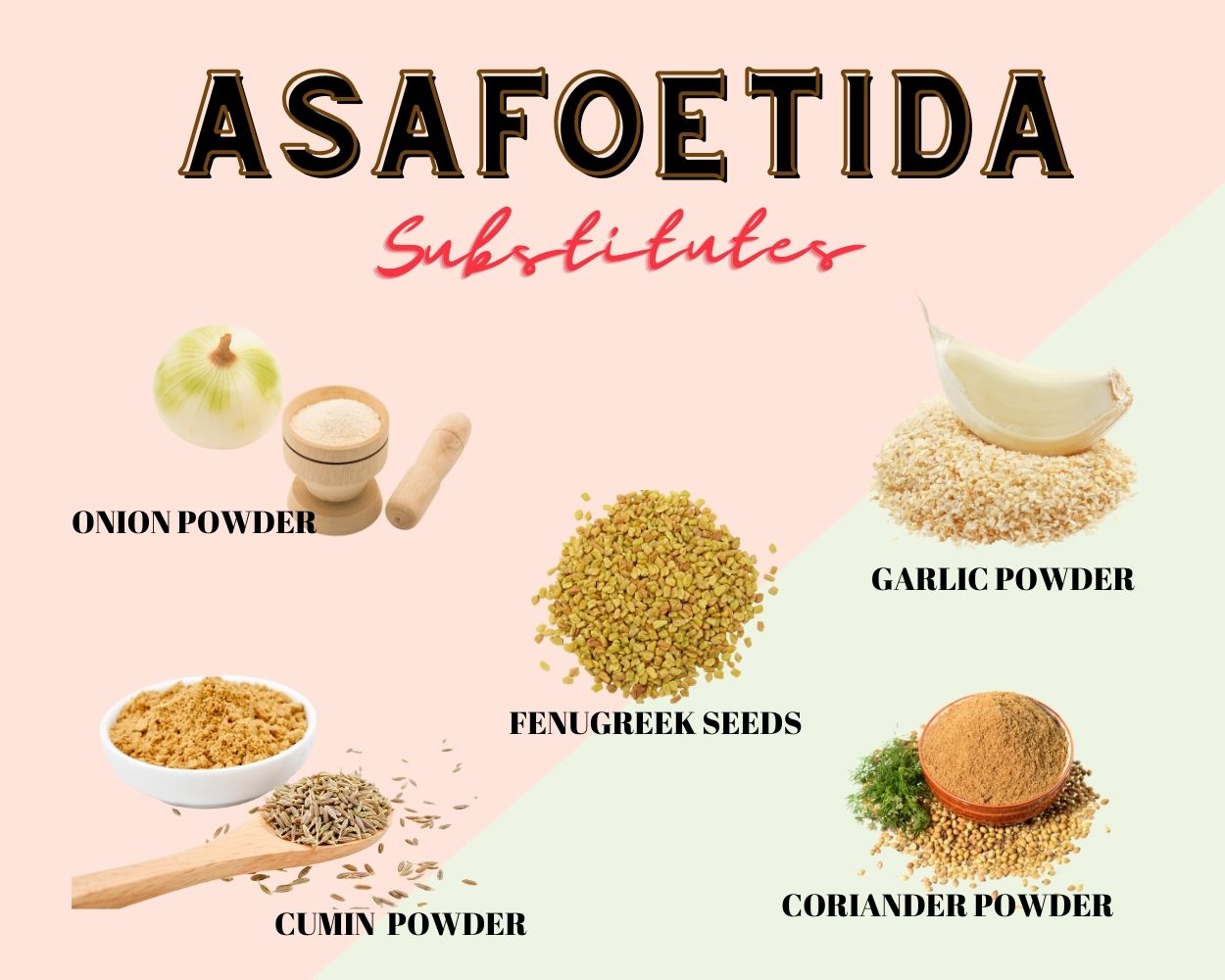
Table of Contents
- What is Asafoetida? Why Use it in Cooking?
- Health Benefits
- How to Use Asafoetida?
- The Best Substitutes for Asafoetida
- Where to buy Asafoetida?
- What Does Asafoetida Taste Like?
- Is Asafoetida the Same as MSG?
- Is Asafoetida Gluten-Free?
- Final Thoughts
- Recipes That Use Asafoetida
- Cooking 101 Resources
- Asafoetida Substitute Recipe
What is Asafoetida? Why Use it in Cooking?
Asafoetida, scientifically known as Ferula assa-foetida, is a perennial herbaceous plant belonging to the Apiaceae family, including carrots, parsley, and celery. It is native to the mountainous regions of Afghanistan, Iran, Pakistan, and parts of India. The plant can grow up to six feet in height and has large, feather-like leaves.
Historically, asafoetida has been used for its culinary and medicinal properties for thousands of years. It has a rich cultural and culinary heritage, particularly in Indian cuisine, where it is known as “hing”.
In India, it holds a revered place in vegetarian cooking, often used in dishes like lentils, vegetables, and various rice preparations. You can find asafoetida in rock form or as powdered asafoetida.
Health Benefits
Asafoetida has a longstanding history in traditional medicine, where it’s believed to have potential health benefits. While more scientific research is required to substantiate these claims, preliminary studies propose that asafoetida may provide a range of health advantages. (Source)
Digestive Aid: Asafoetida is reputed for its potential to facilitate digestion by promoting the production of digestive enzymes. It may offer relief from common digestive discomforts such as bloating, gas, and indigestion.
Respiratory Health: In traditional medicine systems, asafoetida has a history of use in managing respiratory ailments like asthma, bronchitis, and coughs. It is believed to have the ability to alleviate respiratory discomfort and assist in expelling mucus from the airways.
Menstrual Disorders: Asafoetida has been integrated into traditional practices as a remedy for menstrual issues, including discomfort and irregular cycles. It is believed to possess emmenagogue properties, which may stimulate menstrual flow.
Antioxidant Properties: Asafoetida boasts compounds with antioxidant attributes. These antioxidants are known for safeguarding cells against harm caused by free radicals, which are linked to numerous chronic diseases.
Pain Relief: Asafoetida has been historically applied topically as a remedy for pain, especially for alleviating headaches and migraines.
How to Use Asafoetida?
Asafoetida is a powerhouse spice that commands respect in the kitchen. Its robust flavor and aromatic intensity call for judicious use. A little asafoetida goes a long way when used in cooking.
Here are some ways to incorporate asafoetida in your cooking:
Infused Oils and Ghee: Elevate your dishes by dissolving a modest pinch of asafoetida in a spoonful of warm oil or ghee. This alchemical marriage happens at the outset of cooking, setting the stage for a symphony of flavors.
Liquid Harmony: For soups, stews, and dals, add asafoetida directly to the simmering liquid. Ensure it melds seamlessly, imparting its essence throughout the dish.
Tempering/Tadka: Asafoetida is commonly used in the technique known as “tempering” or “tadka” in Indian cuisine. This involves adding spices to hot oil or ghee to release their flavors before incorporating them into the dish. Tempering can be added to curries, dals, raita, and snacks in Indian cuisine.
Pickles and Chutneys Elevation: Asafoetida lends a distinctive touch to pickles and chutneys, seamlessly intertwining with companions like mustard seeds and cumin.
The Best Substitutes for Asafoetida
The choice of substitute for asafoetida hinges on the specific flavor profile you aim to achieve in your dish. Don’t hesitate to experiment with different options until you discover the one that complements your recipe to perfection. While these alternatives work splendidly, they don’t quite capture the entirely unique essence of Asafoetida.
Garlic and Onion Powder
A harmonious blend of garlic and onion powder can effortlessly replicate the flavor profile of asafoetida. Use them in equal measures as a substitute.
Garlic and Onion Paste
Freshly prepared garlic and onion paste is a robust alternative to asafoetida. Sauté this paste in oil or ghee before using.
Fenugreek Seeds
Though not an exact match, fenugreek seeds contribute a slightly bitter, nutty note akin to asafoetida, making them a viable asafoetida replacement.
Cumin and Coriander Powder
The fusion of cumin and coriander powder can be used as an alternative for asafoetida. While not an exact replica, this amalgamation imparts depth and complexity and acts as a substitute.
Where to buy Asafoetida?
If you have a local Indian grocery store in your area, it’s highly likely that they will carry Asafoetida.
Amazon has a wide variety of brands and forms of Asafoetida available for purchase. Below are some popular brands:
What Does Asafoetida Taste Like?
Asafoetida has a flavor profile that is both distinct and robust. Its raw form exudes a pungent aroma reminiscent of a potent amalgamation of garlic and onion.
However, upon cooking, its character undergoes a fascinating transformation. The pungency mellows, giving way to a rich umami essence that imparts depth and savoriness to dishes.
This unique attribute makes asafoetida a prized addition to vegetarian cuisine, where it seamlessly replicates the nuanced flavors typically achieved through the use of ingredients like garlic and onions. Additionally, a subtle bitterness and, in some varieties, a touch of fermented tanginess contribute to its complex taste profile.
Is Asafoetida the Same as MSG?
No, Asafoetida and monosodium glutamate (MSG) are distinct ingredients with unique chemical compositions and flavor profiles.
Asafoetida is a natural resin derived from the roots of specific plants in the Ferula genus. Known for its pungent and sulfurous aroma, it is a popular flavoring agent in cuisines worldwide, particularly in Indian and Middle Eastern cooking.
On the other hand, MSG, or Monosodium Glutamate, is a chemical compound comprising sodium and glutamate, an amino acid naturally present in numerous foods. Used as a flavor enhancer, MSG imparts a savory or umami taste to dishes and is commonly associated with Asian cuisine, though it is utilized globally.
Though both Asafoetida and MSG serve to enhance food flavors, they originate from different sources, possess distinct chemical structures, and contribute unique tastes to culinary creations.
Is Asafoetida Gluten-Free?
Pure asafoetida, derived from the Ferula plant resin, is gluten-free. Exercise caution with blended products, as they may contain gluten-containing additives.
Always check labels for allergen information. If you have a gluten allergy or sensitivity, choose products labeled gluten-free or from reputable sources.
Final Thoughts
When choosing a substitute, adaptability is key. While nothing quite matches the distinctive flavor of hing, these substitutes offer a versatile array of options. Remember, in the world of cooking, experimentation is not just encouraged but celebrated. So, don’t hesitate to venture into new flavors and find the perfect asafoetida substitute that elevates your dish to new heights. Happy cooking!
Recipes That Use Asafoetida
- Indian Dal Tadka
- Potato Masala
- Kakdi Koshimbir
- Khichdi (Indian Lentils & Rice)
- Peanut Chutney
- Lemon Rice
Cooking 101 Resources
Resources
The Best Garam Masala Substitute
Cooking 101
Kashmiri Chili Powder Substitute
Cooking 101
Paneer Substitutes
Cooking 101
Cumin Substitutes
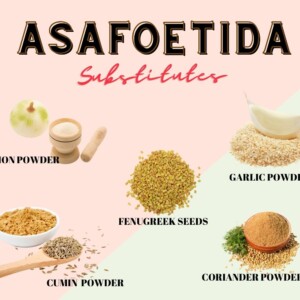
Asafoetida Substitute
Ingredients
- Garlic and Onion Powder
- Garlic and Onion Paste
- Fenugreek Seeds
- Cumin and Coriander Powder
Instructions
Garlic and Onion Powder
- A blend of garlic and onion powder can replicate the flavor profile of asafoetida. Use them in equal measures as a substitute.
Garlic and Onion Paste
- Freshly prepared garlic and onion paste is a robust alternative to asafoetida. Sauté this paste in oil or ghee before using.
Fenugreek Seeds
- Though not an exact match, fenugreek seeds contribute a slightly bitter, nutty note akin to asafoetida, making them a viable asafoetida replacement.
Cumin and Coriander Powder
- The fusion of cumin and coriander powder can be used as an alternative for asafoetida. While not an exact replica, this amalgamation imparts depth and complexity and acts as a substitute.
